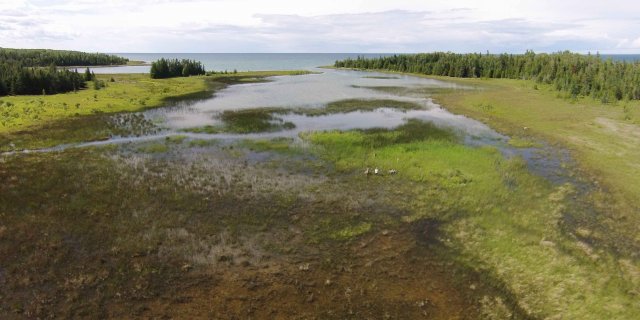About the Great Lakes Coastal Wetland Monitoring Program (CWMP)
Great Lakes coastal wetlands are important ecosystems that provide habitat for diverse plant and animal communities, ecological functions and opportunities for recreation. Despite their importance, much of these wetlands have been destroyed or degraded over the past century. To assess the status of Great Lakes coastal wetlands and inform restoration and protection efforts, the Great Lakes Restoration Initiative (GLRI) supports the Great Lakes Coastal Wetland Monitoring Program (CWMP).
The CWMP is a collaboration between EPA’s Great Lakes National Program Office and academic partners located in both the United States and Canada. The CWMP uses a comprehensive approach to sample and assess all major coastal wetlands throughout the Great Lakes Basin using standardized procedures. Monitoring of birds, amphibians, fish, macroinvertebrates and plant communities, and water quality occurs at a subset of the Great Lakes coastal wetland sites annually, and the data collected at these sites are used to assess the status and trends of Great Lakes coastal wetland conditions. Since the program began sampling in 2011, over 1,000 wetland sites have been visited, resulting in the monitoring of over 400,000 acres of coastal wetland habitat.

